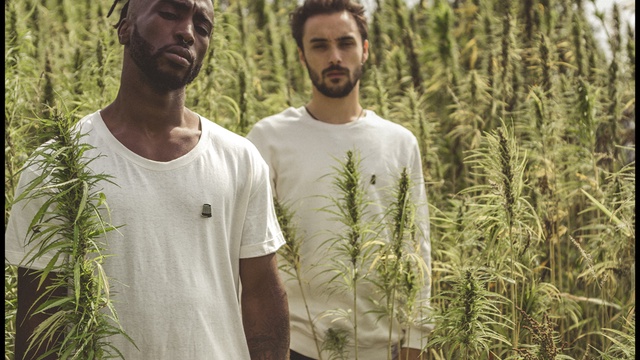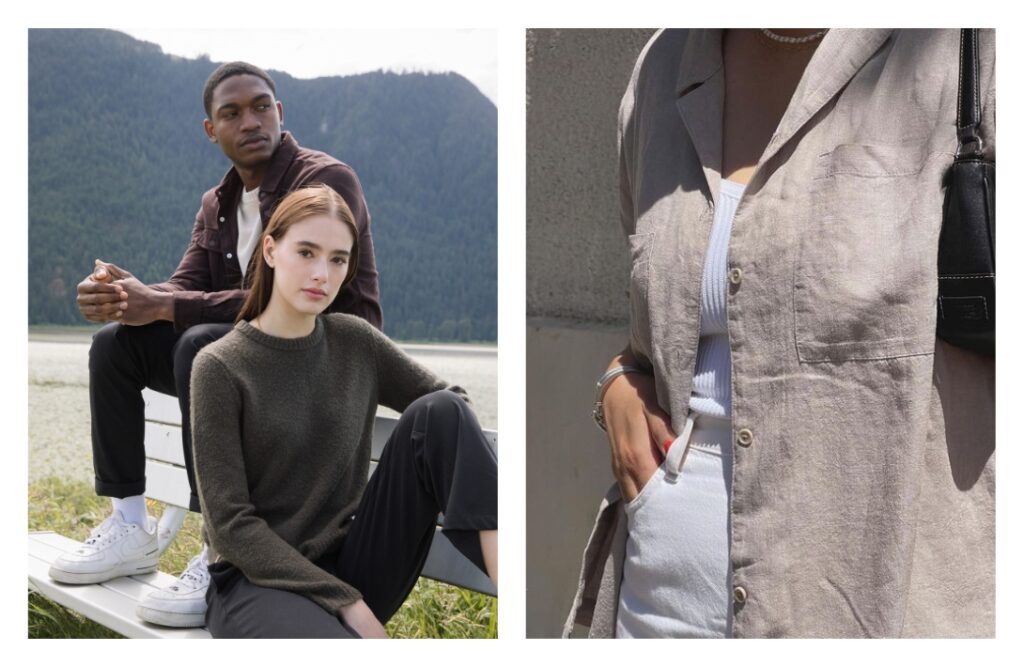New Advice To Deciding On Bamboo Clothes
Wiki Article
Why Is Hemp So Sturdy And Stronger, As Well As More Regenerable?
Hemp is frequently regarded as more biodegradable, long-lasting, and regenerable than cotton due to its natural properties and the way it is cultivated. Here's why- Biodegradability-
Natural Fibers Hemp is an organic fiber derived from plants is biodegradable. When discarded, hemp clothing and textiles break down naturally, and then return to the earth without generating the long-lasting debris. This contrasts with synthetic fibers like polyester, which require many years to decompose.
Hemp textiles do not typically have chemical treatments or additives that could hinder biodegradability. Contrary to this, some textiles can be treated with synthetic chemicals, like certain finishes or dyes, which can slow down the biodegradation process.
Durability-
Hemp fibers are considered for being strong and durable. Fabrics and clothes made from hemp are less likely to get damaged and last longer than cotton-based products. The long-lasting nature of hemp clothing means that it is able to endure more washings and wearing cycles before it begins to deteriorate.
Hemp fabrics have a lower tendency to pill (the form of a small, fuzzy ball on the fabric's surface) than cotton. This is a factor that contributes to their longevity and quality.
Regenerative Agriculture-
Soil Health- Hemp cultivation is regenerative when practiced in a sustainable manner. Hemp cultivation that is sustainable has a deep-rooted system which can prevent compaction of the soil. This root system assists in preventing erosion. This aspect of regenerative can leave the land in better condition for future crops.
Low Environmental ImpactSustainable hemp cultivation practices typically require minimal pesticide and herbicide usage, which reduces environmental harm. Cotton farming is a conventional method that may cause soil degradation and water pollution as well as other environmental issues due to the use of synthetic chemicals.
Water Efficiency-
Low Water Requirements- Hemp typically needs less water than cotton to growth. Its drought-resistant qualities enable it to flourish even under conditions with minimal rainfall or irrigation. This makes it an ideal option for regions with only a limited supply of water.
Hemp can also be included in systems of crop rotation to enhance soil health, lower the risk of diseases and decrease depletion. In cotton farming the practice of rotating crops is not as common.
Flexibility- Hemp is a great material in many different applications, such as textiles, clothing, paper, building materials, and more. Hemp can be grown in a variety of ways such as renewable and sustainable.
It's crucial to understand that hemp is a great product, but it can be a waste of resources, depending on your processing and farming methods. The environmental benefits of hemp could be maximized by selecting products that have been produced responsibly and in accordance with environmentally friendly practices. In the same way selecting organic cotton products can help alleviate some environmental problems associated with conventional cotton production. Take a look at the top rated continue reading this about hemp clothes for website info including hemp golf shirts, 100 hemp clothing, hemp tees wholesale, hemp tank top, hemp mens jeans, mens hemp clothing, hemp fabric, hemp shorts patagonia, hemp boxer shorts, hemp trousers and more.

What Is It That Makes Hemp Fibers Water-Wicking And Breathable?
Hemp fibers have unique chemical and structural characteristics that make them breathable thermoregulation and moisture wicking. These characteristics are the result of several elements. Microscopic structure- Hemp fibers possess pore-like hollow structures that allow air to circulate within the fibers. This porosity in hemp fibers makes them highly breathable. The structure is weaved into fabrics so that air can flow through. This promotes ventilation and keeps moisture and heat from being trapped against the skin.
Hemp fibers are able to absorb water and help wick away moisture. If you are wearing hemp clothing they can take sweat and moisture off your skin, eliminating the feeling of being wet. The hemp fibers are also effective at dispersing sweat from the body, permitting it to evaporate faster. This moisture-wicking quality keeps you dry and comfortable when working out or during the summer heat.
Hemp fibers are naturally inherently insulating. They can entrap warmth close to the skin when it is cold. When it is hot, they let heat and moisture to out. This helps to cool the body. The thermoregulatory properties of hemp make hemp clothing appropriate for a wide range of temperatures and activities.
Anti-Microbial properties- Hemp fibers have natural antimicrobial properties, which can aid in preventing the growth of bacteria that cause odor. This property contributes to the freshness of hemp clothes, even when worn when exercising.
Hemp fibers have a long life span and are durable. This means that hemp clothing is able to withstand repeated washing and wearing without losing breathability or moisture wicking properties. This extends the life of hemp garments, reducing the need for replacements and, consequently, the impact on the environment.
UV Protection Hemp Fibers provide natural UV protection that shields skin from damaging UV radiation. The UV-blocking properties add to hemp clothing’s versatility, making it perfect for outdoor pursuits.
These properties of hemp are intrinsic and are not influenced by additives or chemical treatment. Hemp is a naturally-occurring fibre with a variety of qualities that make it a suitable and sustainable for clothes. This is especially true for outdoor wear, activewear and warm-weather clothes. Furthermore, these characteristics are preserved even as hemp fibers are processed and weaved into fabrics that make them an ideal choice for sustainable and practical clothes. Follow the recommended hemp clothing hints for blog tips including nomad hemp clothing, patagonia iron forge pants, hemp fleece fabric, hemp jeans, hemp shorts, hemp active wear, hemp fabric, hemp shorts mens, hemp bathing suit, womens hemp clothing and more.

What are the main differences between bamboo and hemp fibers?
Bamboo and hemp are two different plant-based fibers used in textile manufacturing, each with its unique qualities and characteristics. These are the main differences in hemp and bamboo fibers. Plant Source-
Hemp Fibers- Hemp fibers are derived from hemp stalks, more specifically the outer bast. Hemp is a flexible and quick-growing crop that has been used in many ways throughout history.
Bamboo fibers- Bamboo fibers are derived from the pulp of the bamboo plant. Bamboo is a fast-growing species grass, known for rapid renewal and durability.
2. Fiber Characteristics
Hemp Fibers- Hemp fibers are known for their their strength and durability. They are among the strongest natural fibers, and soften with each wash, making them suitable for long-lasting textiles.
Bamboo- Bamboo fibres are soft and silky, with a smooth texture. Although they aren't as durable as hemp fibers, and are more delicate in certain circumstances, their comfort to the skin is highly valued.
3. Texture and Feeling-
Hemp fabric is a bit coarse and has a rough feel. This is especially true in its natural state. It is comfortable but is different from bamboo.
Bamboo- Bamboo material is smooth, soft, and silky. It has been described as having the feel of silk and cotton.
4. Breathability (and moisture-wicking)-
Hemp- Hemp fibers are naturally water-wicking and breathable, which allows the circulation of air and absorption of moisture. These can keep you cool during hot summer days.
Bamboo Fibers- Bamboo fibers are known for their a high level of breathability and moisture wicking. They also have micro-gaps which increase their capacity to regulate moisture and temperature, ensuring you are comfortably in any weather.
5. Environmental Impact-
Hemp Hemp is considered an eco friendly fiber, because of its fast growth, its low need for water as well as its resistance to insect bites, which makes it less important to apply pesticides. It can also remove carbon dioxide from atmosphere when it grows.
Bamboo is considered to be a material that is sustainable. It grows quickly, needs little water and is easy to grow without pesticides that are synthetic. Some bamboos are considered sustainable, such as Moso bamboo.
6. Processing-
Hemp- Hemp requires extensive processing in order to separate its outer bast fibers (outer woody core) from the woody inner fibers. The process may involve decorations, retting and mechanical separation.
Bamboo- Bamboo is usually created by a chemical process called the viscose- or rayon-process. It involves using chemical substances to degrade bamboo fiber. While this process raises environmental concerns if it is not managed responsibly, some bamboo textiles utilize closed loop systems to minimize the amount of chemicals that are disposed.
7. Versatility-
Hemp Fibers- Hemp fibers can be used for a number of uses, which include textiles, clothing paper, building materials.
Bamboo- Bamboo fibres are used primarily in clothing and textiles, but they can also be found in other products such as towels and bedding.
In the end Both bamboo and hemp have distinct qualities and sustainability benefits. The choice of which one to choose is contingent on the specific characteristics and properties you seek in a textile item as well as your personal preferences regarding the environment. See the best bamboo clothing for website advice including bamboo ladies pants, bamboo fabric clothing, bamboo sports clothing, kyte pajama, lisa frank bamboo pajamas, bamboo fibre clothing, bamboo sun shirt, mens bamboo clothing, childrens bamboo socks, bamboo fiber t shirt and more.
